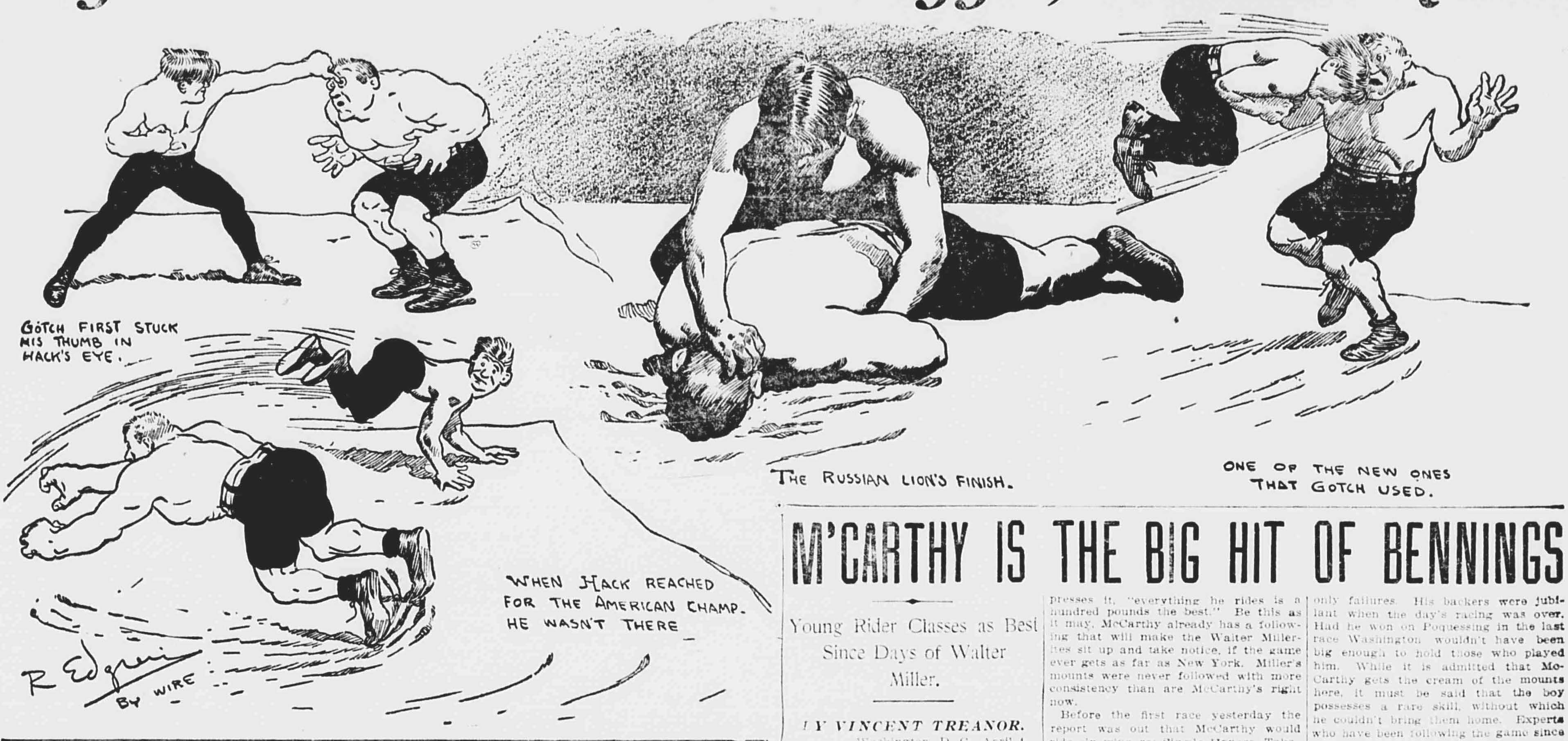Második Gotch-Hack meccs
Ezt a bejegyzést egy beszélgetés miatt írtam, amelyen a Twitteren megcímkéztek 1911 Frank Gotch és Georg Hackenschmidt visszavágója a nehézsúlyú birkózó-világbajnokságért. Jim Cornette, aki amellett, hogy a profi birkózás egyik legjobb menedzsere, elismert profi birkózástörténész is, talked about the double cross in the second Gotch-Hack match on his podcast, The Jim Cornette Experience. The double cross he referenced was not one I had heard.
Before I wrote Gotch vs. Hackenschmidt, I was aware of the legend that Ad Santel, a hooker or skilled submission wrestler with a mean streak, accepted $5,000.00 to deliberately injure Hackenschmidt during his training camp for the second match. Santel, who was known by his real name Adolph Ernst at the time, helped train Hackenschmidt, his mentor, for the match. Az 1930-as években, Santel told Lou Thesz about this double cross. Thesz repeated the story on A&E’s The Unreal Story of Professional Wrestling in the 1990s.

The powerful and dangerous Ad Santel, who wrestled in the prearranged era but was a legitimate catch wrestler (Public Domain)
Before writing the book, I believed this legend. Viszont, after completing my research for the project, I have strong doubts. I have no idea why Frank Gotch would pay Ad Santel the equivalent of $130,000.00 today to injure someone he easily defeated in the first match.
While Gotch was actively wrestling during the ensuing three years, Hack was inactive due to knee problems, which would end his career after the 1911 match. Hack only managed a draw with Stanislaus Zbyszko in their 1911 match to establish the next challenger for Gotch. Gotch chose to wrestle Hack and continued to avoid a rematch with Zbyszko. Why would he be concerned enough to pay Santel to injure Hackenschmidt?
Dr. Benjamin Roller, who oversaw Hackenschmidt’s training camp, also said the knee injury occurred when he and Hack banged knees during camp. The collision aggravated pre-existing knee problems. Roller and Hackenschmidt had a falling out after the rematch due to what Roller felt was Hackenschmidt’s disinterested training for the match. Hackenschmidt was obviously injured and out-of-shape before the rematch.
Jim Cornette said on his show that Gotch promised to carry Hackenschmidt through the match but double crossed him in the ring by defeating him easily. This account is much more plausible. It would be out of character for Hackenschmidt to agree to lose a match. He would have been much more likely to pull out of the bout. Viszont, Gotch and the promoters would have been desperate to get him into the ring for the lucrative rematch. The Labor Day match played in front of a huge crowd.

Gotch Fouling Hackenschmidt from the August 4, 1908 edition of New York Evening World
While Hackenschmidt would not normally agree to any arrangement, he had to know in his current condition he was no match for Gotch. Facing his last big payday and the end of his in-ring career, Hack may have agreed to go on, if Gotch made him look good. Whether they did make arrangements or not, Gotch crushed Hackenschmidt in a one-sided affair.
While we can never know for sure, this scenario is more plausible to me than the other legends I’ve heard. It is possible under the circumstances.
Note: I actually found the book Jim Cornette was talking about on Kindle for less than $5.00. I bought The Fall Guys (affiliate link) Saturday and finished it Sunday. I recommend the book for as a good starting point, if you are interested in 1930s wrestling. It is a good reference to point you to further research. The book contains a number of factual errors and was written to get revenge on the promotional group, who employed and fired Marcus Griffin.
You can leave a comment or ask a question about this or any post on my Facebook oldal.
Pin It
